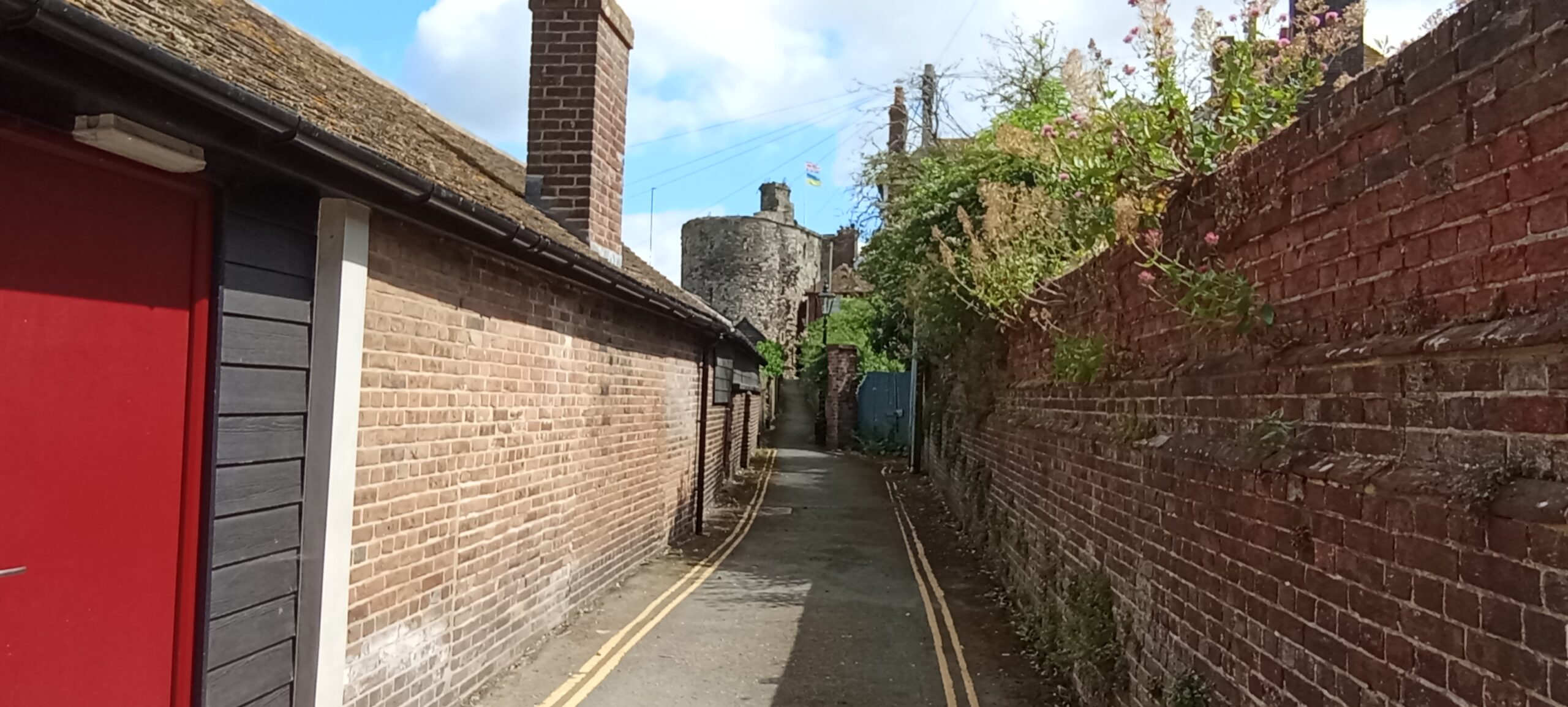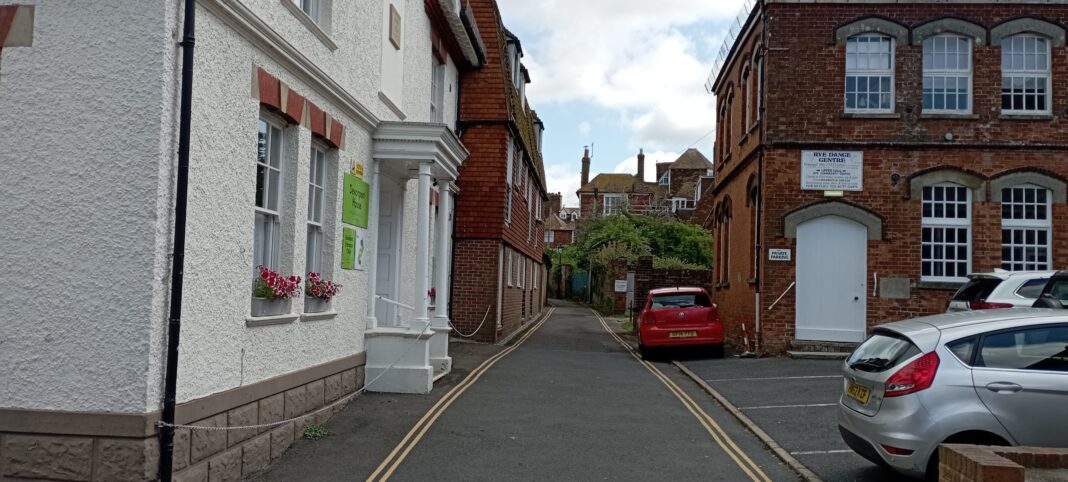Visitors to Rye are sometimes puzzled by the name Turkey Cock Lane, I know I was on my first visit (many years ago!) There is no sign of a Christmas poultry farm, indeed, it hardly seems the right area for such a thing. In fact, for those who don’t know the story, it’s more disturbing than the starting point for your favourite Christmas roast.
Where the lane now runs was, in the 14th century, the site of an Augustinian friary. The ethos of the Augustinian order is the pursuit of truth through learning and behaving with love towards others. A love of music is central to the order. Indeed, St. Augustine said “qui cantat, bis orat”, whoever sings prays twice. Unlike other monastic orders, the Augustinians believe in sharing rather than poverty. Like all orders they followed a vow of chastity.
The story involving Turkey Cock Lane is one of both music and love, sadly, not in the way that the order intended. It is said that a friar named Cantator, so named because of his particularly beautiful voice, saw a beautiful woman named Amanda and fell in love with her. The name means Beloved, and she soon became that to Cantator. Her home was just beyond the wall of the friary, and after seeing her, Cantator would sing and Amanda would listen. Then they would have secret, whispered conversations and love blossomed. Eventually they decided that they had to be together, and planned an elopement to France, where they could live happily ever after. But, as Robert Burns says in To a mouse – The best laid plan o’ mice an’ men gang aft a-gley.
We are told that their plans became known to someone, who told the authorities. Before the star-crossed lovers could escape they were taken into custody and condemned to a horrible fate: to be buried alive. After their grisly end it was said that Amanda’s shade could be seen behind the windows of her father’s house. It was said that Cantator went mad and started to sing, but instead of songs what came out sounded like the gobblings of a demented turkey. Another version has it that just Cantator was immured, in the walls of the friary, and before death took him he could be heard singing to Amanda – albeit somewhat muffled presumably. As he became parched his voice became croaky and in the end he sounded like a turkey. It was said that the cowled figure of a monk could be seen in the friary grounds, and the sounds of a turkey heard.

As with so many folk tales there are a number of differing versions. Some say that the remains of both were uncovered during the 19th century, with their skeletons entwined, and that after a Christian burial all manifestations ended. Another has it that they were found during the Second World War. Yet another version dates the story to 1569, and that they were a monk and a nun in love. They, apparently, were trapped by a jealous nun, who reported their goings on to the Mother Superior. That version says that they were buried alive in a single coffin, and were named Brother John and Sister Mary. I can confidently say that the latter version is the tale of an old wife as Rye monastery was suppressed by order of Henry VIII in 1538.
There have also been stories of a number of monks’ ghosts being seen in what was the monastery grounds. It seems that a number of skeletons have been excavated over the years, some of whom seem to have been buried alive.
Image Credits: Nick Forman .



